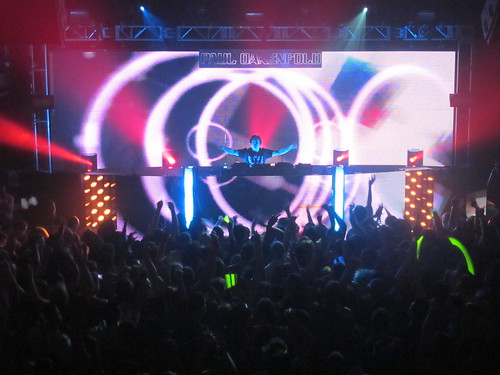
all photos by author, except where noted.
Earlier this week DC got a visit from two legendary electronica DJ/producers two nights in a row. On Monday night, perpetual innovator and second-wave Detroit techno demi-god Richie Hawtin set-up shop at U Street Music Hall. On Tuesday night, the world’s most well-known DJ and trance techno titan Paul Oakenfold took over the 9:30 Club. The two concerts delivered epic dance parties and for anyone with a day job sandwiched in-between they offered a sleep-deprived, bass-driven euphoria that was reminiscent of the raves of yore.
The two concerts were fantastic and delivered on everything that they promised; which proved to be two very different things. Oakenfold and Hawtin have each been a major force in the world of electronic music for the past twenty years. The two occupy opposite ends of a huge swath of the electronic dance music spectrum. Oakenfold’s trance is about as mainstream as it gets; he has a huge following around the world and he has produced some of the most recognizable dance tunes of film, television, and radio. Richie Hawtin is a king of the underground, his often challenging music is designed to intellectually engage the listener as much as it is to get their feet moving. Oakenfold’s style is more pop consumable, while Hawtin, although ragingly popular in his own circles, is more of an acquired taste. Their concerts this week were relentless dance parties but also offered a fascinating live example of two very different styles of dance music and its presentation.
Openers:
Gaiser
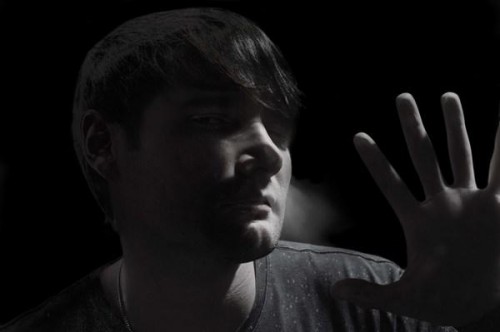
courtesy of Gaiser.
Richie Hawtin brought along his protege Gaiser as his warm-up man. Gaiser performed a sprawling 2-hour set of live beat mixing that showed off his sound layering skills as he carefully built Jenga towers out of varied bass pulses and high-end sound effects. The real fun was listening to him then deconstruct the towers piece by piece. Frequently he would drop-out the bass completely to create low-end vacuums filled with intricate clicks, clacks, and electro bleeps. These minimal break-downs were my favorite parts of his set. It was as if your brain would fill-in the now absent bass beats to keep you dancing until Gaiser brought them back hard, like a hand suddenly sweeping the Jenga pieces off the table. Gaiser continued with his construction/demolition technique for 2 hours; it was relentless and exhausting in the best possible way.
Nervo
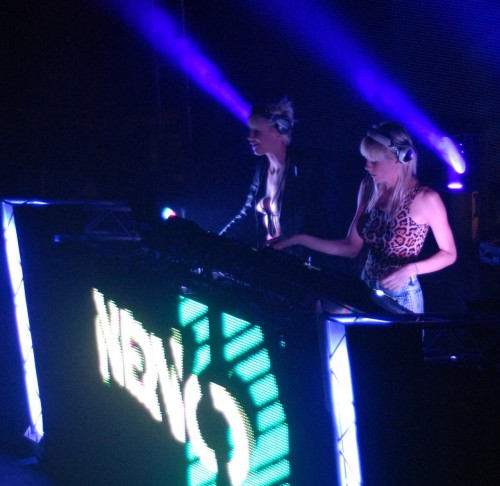
photo by Ben Eisendrath.
Oakenfold told me last week that his Facelift tour is all about the evolving nature of electronic music. To illustrate this he invited two very different openers along with him.
Nervo (or the Nervo Twins) are two beautiful blond women who laid down electro beats with a minimalist edge while never quite veering off into experimental territory. They were quick to toss in a live remix of a dance-pop or diva-vocal track to keep the crowd plugged in. I felt that this made their set a little uneven at times. I would have preferred to hear them really push the envelope more. I think the audience would have went along with them wherever they took us.
Chuckie
DJ Chuckie then took over and delivered a huge two hour set crafting inventive live remixes of dance-pop hits and some killer mash-ups. His set was world-class and could have been the headline performance the way the crowd reacted to it. It was obvious from watching him from the balcony that Chuckie is a natural master behind the mixer. His dizzying array of samples and truly ingenius reworkings of almost cliche dance classics like ‘Calabria’ or ‘Nightmare (Sinster Strings)’ really impressed me. Chuckie also scores major points for spelling his name out with the LL Cool J alphabet rap letters and for dropping Snap’s ‘Rhythm is a Dancer’ like a sneak attack A-bomb.
Main Sets:
Richie Hawtin
Richie Hawtin’s brain must process music differently than normal people. The man known as Plastikman unleashed a set of truly unique live mixes and mind-bending original beats for over two-hours. After a brief transition period out of Gaiser’s set, Hawtin laid down some true science that made Gaiser’s fascinating set seem like pop confection. The first thing that stood out to me about Hawtin’s mixing skills was the invincible and nearly undetectable nature of his transitions. His set came across as one endless song that shape-shifted like a lava lamp mass but never snapped into stand alone pieces. Hawtin took sound layering to another level with a maze of complimentary and conflicting bass beats and a swarm of sound effects that darted in and out of the sound cloud like bugs around a lamp post in July.
Hawtin mastered contradiction with high and low end sounds that seemed to be operating at different speeds. The bass could be lumbering and oppressive but his high-end sounds would be firing off like machine-guns. A few minutes later the bass could be exploding around you like an artillery barrage while piercing electro effects rang out at a discordant snails pace. The effect of all of this on the dancer was to elicit some truly unique moves to keep up with Hawtin’s alien DJ style. It was also a set that offered a world of entertainment to the passive listener as well. At times I took a break from dancing to close my eyes and let me ears really sink into the multi-flavored soup of Hawtin’s sound. His set was simultaneously head music and body-moving.*
Paul Oakenfold
Paul Oakenfold’s set was a massive spectacle of high-energy trance; it was a sound that was equal parts power and beauty. Oakenfold took the energy from Chuckie’s set and multiplied it by 1000 with his. It was a big banging monster set that started strong, sounded surprisingly original and fresh for about an hour, and then dived into his classics for the second half. I guess I was expecting Oakenfold to cater to his more pop-friendly tendencies at this show, so I was really pleasantly surprised to hear him let loose this huge instrumental synth-trance beast for about an hour and a half.
The man knows how to work a crowd and with each gigantic climactic synth symphony he seemed to be controlling the audience like a puppeteer. The crowd was going absolutely bananas at this show and rightfully so. Oakenfold’s music is never challenging but it offers its own basic reward of simply stunning the listener with its grandiose sound. The most impressive points of his set were when he would get the audience gliding on a pleasant sounding trance melody and then drop an aggressive, gnarly bass-line on top of them. At times his set resembled industrialized synth-pop rather than trance; I considered this a good thing as it added to a range of styles in his set. Sometimes trance can get monolithic in its presentation and the mind begins to unplug from it. Oakenfold mixed it up like a maestro keeping me not only engaged but actually amazed at his bag of tricks.
Late in his set, Oakenfold begin to drop some of his album tracks; particularly the female fronted tracks from “Bunkka”. These along with some other radio pop oriented remixes were less interesting to me, but were necessary for his legion on fans in attendance. He never completely caved into this form of crowd-pleasing though; he always pulled back on the yoke at just the right moment to keep things interesting. Ultimately his masterful manipulation of trance and synth variety proved the most genuine crowd-pleaser of all. For his encore Oakenfold unleashed a pure rave fury that set me back on my heels. This impressive encore combined with a few other glimpses of aggressive sounds early in the night, made me wonder what it would be like to see Oakenfold give into the dark side a little more next time.
Visuals:
– U Street Music Hall is an old school dance music space. I love it’s spare black interior. It reminds me so much of the Techno side at Tracks it is uncanny. For Hawtin’s set the already dimly lit, industrial feeling space was plunged into near darkness as most of the lights were turned off on the dance floor. A small light on the DJ booth under-lit Hawtin’s face and occasionally little lamps over the dance-floor would flicker (like they were malfunctioning). This near total darkness on the dance floor eliminated any visual distraction and allowed your hearing to take over as your primary sense. It was the most simple and inexpensive visual technique available and it complemented Hawtin’s music perfectly.
– Oakenfold transformed the 9:30 Club with one of the best high-tech visual set-ups in recent memory. It was stunning. See for yourself.
* Note to Plastikman fans: I saw the full Plastikman show at Coachella and Hawtin’s DJ set was much different; but equally entertaining. His Plastikman set was a slow build while Hawtin DJing had a much more immediate sound.
PS – Have all you Plastikman fans seen this?
This sick, career-spanning, custom-made Plastikman box-set is only available for pre-order until December 31st. I’ve ordered mine!
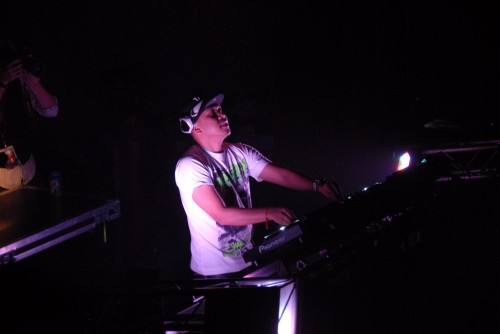
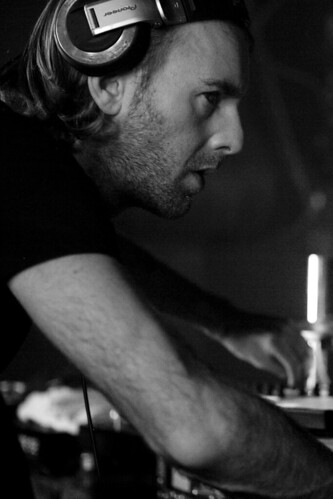
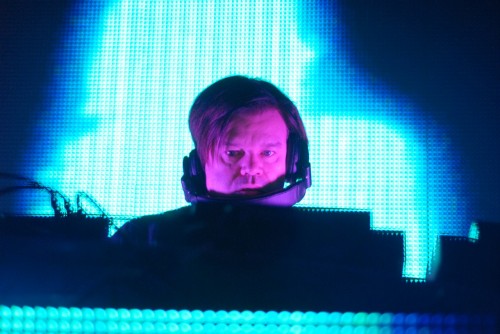
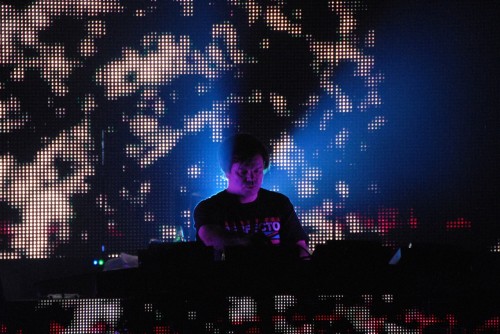


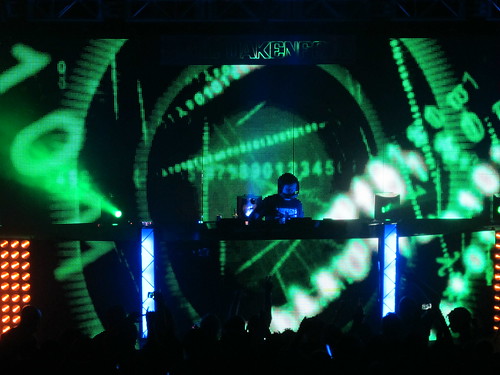
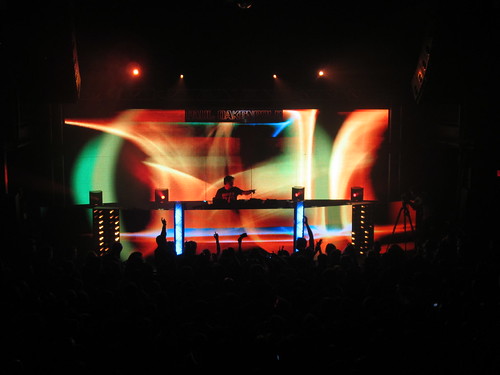

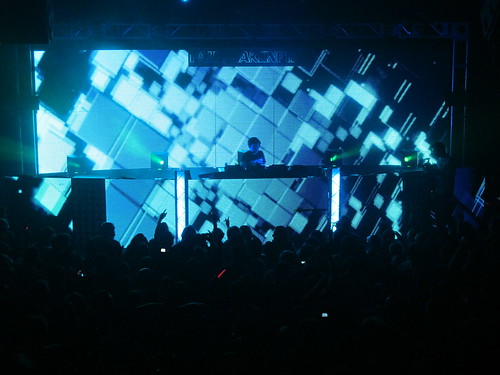
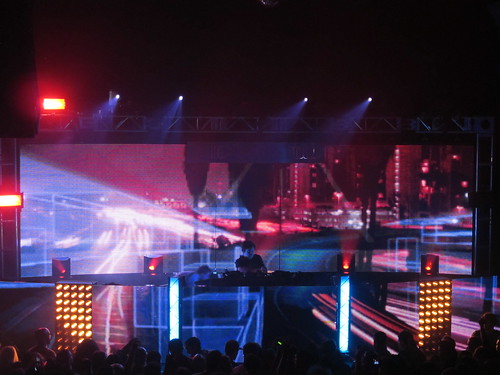
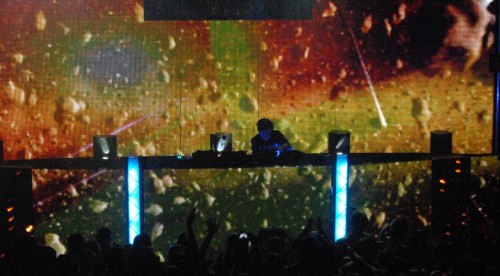


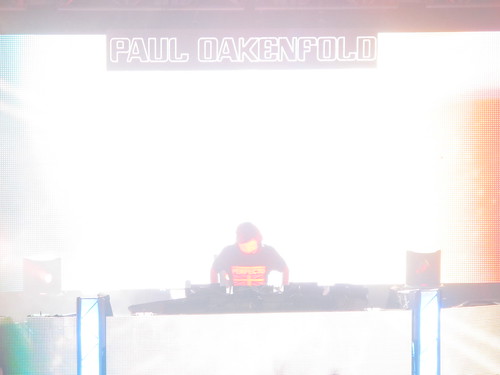

Pingback: Tweets that mention We Love Music: Richie Hawtin vs. Paul Oakenfold » We Love DC -- Topsy.com